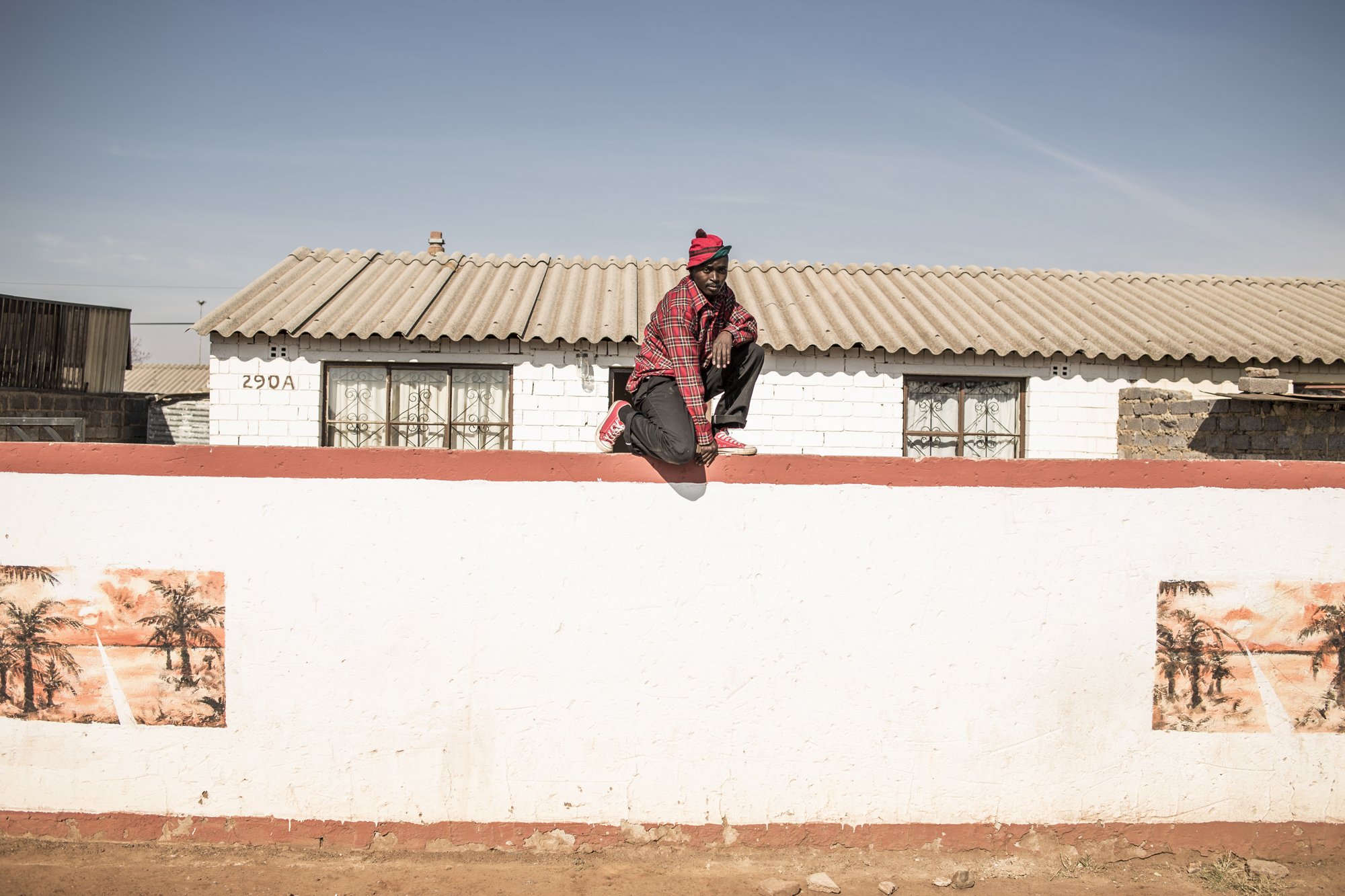PANTSULA
Pantsula is South Africa’s predominant township subculture. Rooted in the Sophiatown jazz culture of the 1950s, it evolved during the 1970s to become the primary expression of youth culture in the townships. It encompasses both a mindset and lifestyle, manifesting through language, music, dress code, and a narrative dance form: Pantsula.
The photographs capture the movements, both literal and metaphorical, of various pantsula dance groups and individual dancers within their respective environments.
Traditionally, South African cultures have conveyed stories through song and dance, narrating tales of the land, ancestors, or, in the case of pantsula, depicting urban living conditions. The dance form itself serves as a storytelling platform, reflecting historical and contemporary situations.
I initiated the documentation of isipantsula in 2010. Since 2012, I have collaborated with Dr. Daniela Goeller, who conducts research on isipantsula culture at the University of Johannesburg. To our knowledge, isipantsula has not been historically analyzed as a culture, and substantively informed information and documentation are scarce.
Drawing on my past experiences documenting dance and performance art, I chose to capture the fundamental and pivotal steps of pantsula dance as a point of reference. Due to the rapid pace of the dance, I recorded these intricate movements on video. In post-production, I transformed the format by breaking the video into individual frames, ultimately compiling a large-format digital contact sheet and print series, which can be output as a flip book or print.
Additionally, I composed a portrait series. The portraits and group shots re-enact elements from the dance form. These poses and gestures, unique expressions, serve as powerful visual markers of identity and belonging to the subculture.
By combining these two mediums, I am able to convey the essence of the dance, illustrating both the nuances of the movements and how the dance form is intertwined with culture, fashion, and the township environment.
The project was selected for the 2015 Lagos Photo Festival and featured in January 2016 on The New York Times Magazine Lens Blog, as well as gracing the cover of the Culture Section of the paper.
The body of work has also been exhibited in multiple showcases, including a solo exhibition titled 'Sahara Phara' in 2011, Lagos Photo Festival 2016, a solo museum show at the UCLA Fowler museum in 2017, and in the MOMA New York's 'Items: Is Fashion Modern?' exhibition in 2017.

















































